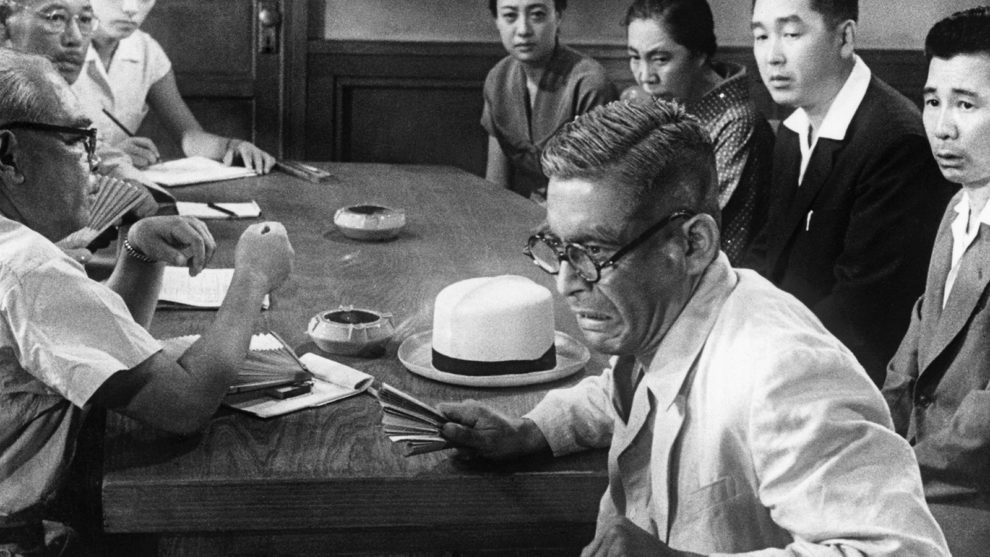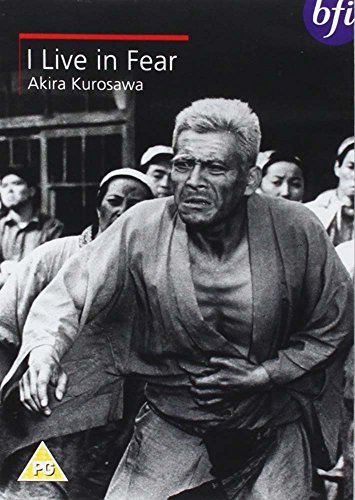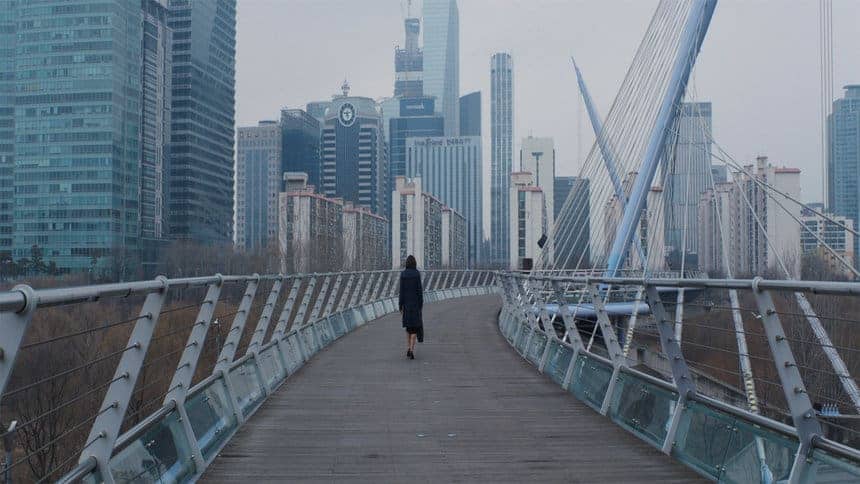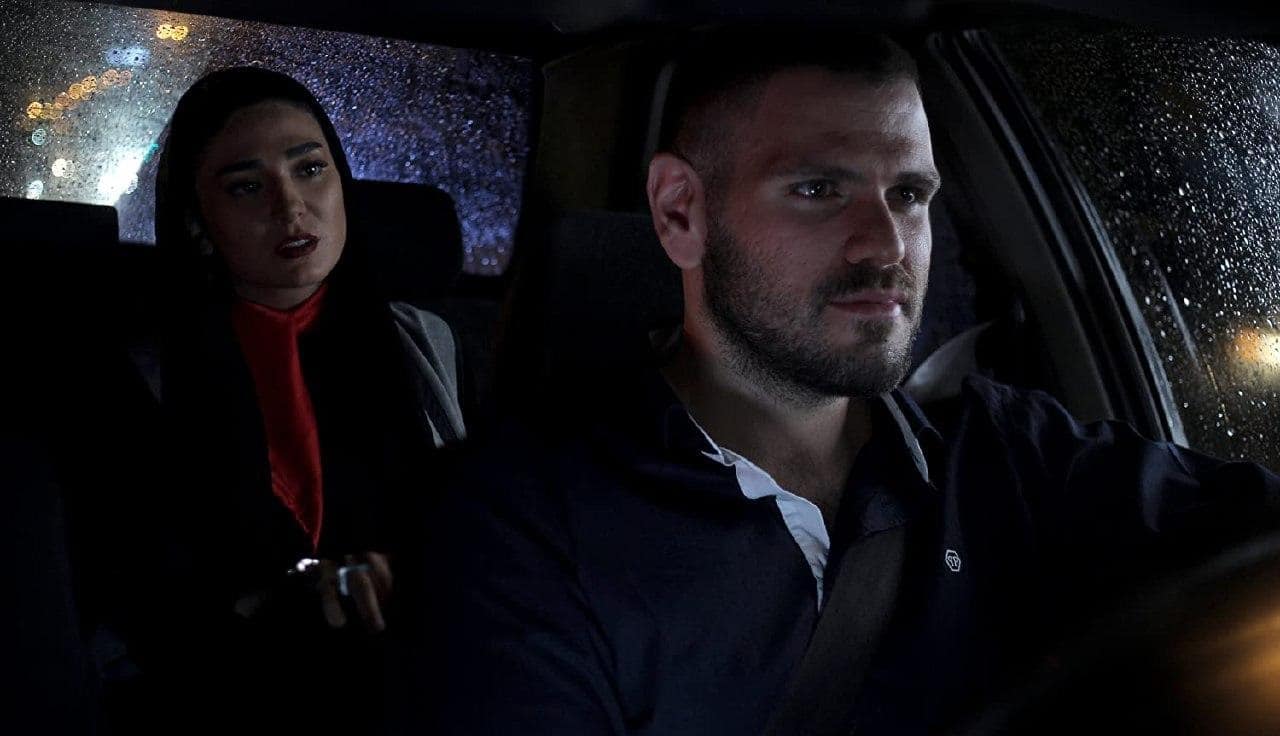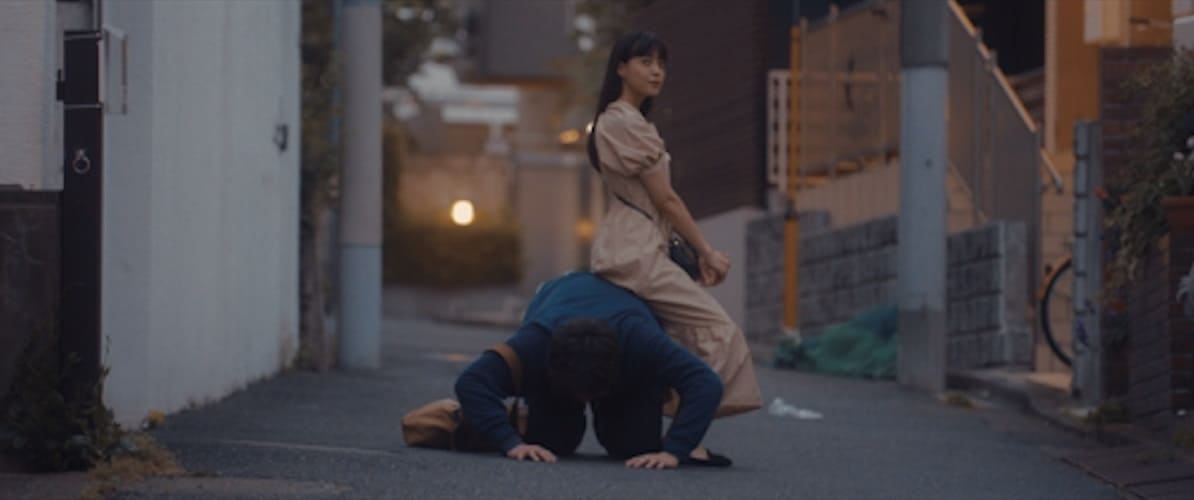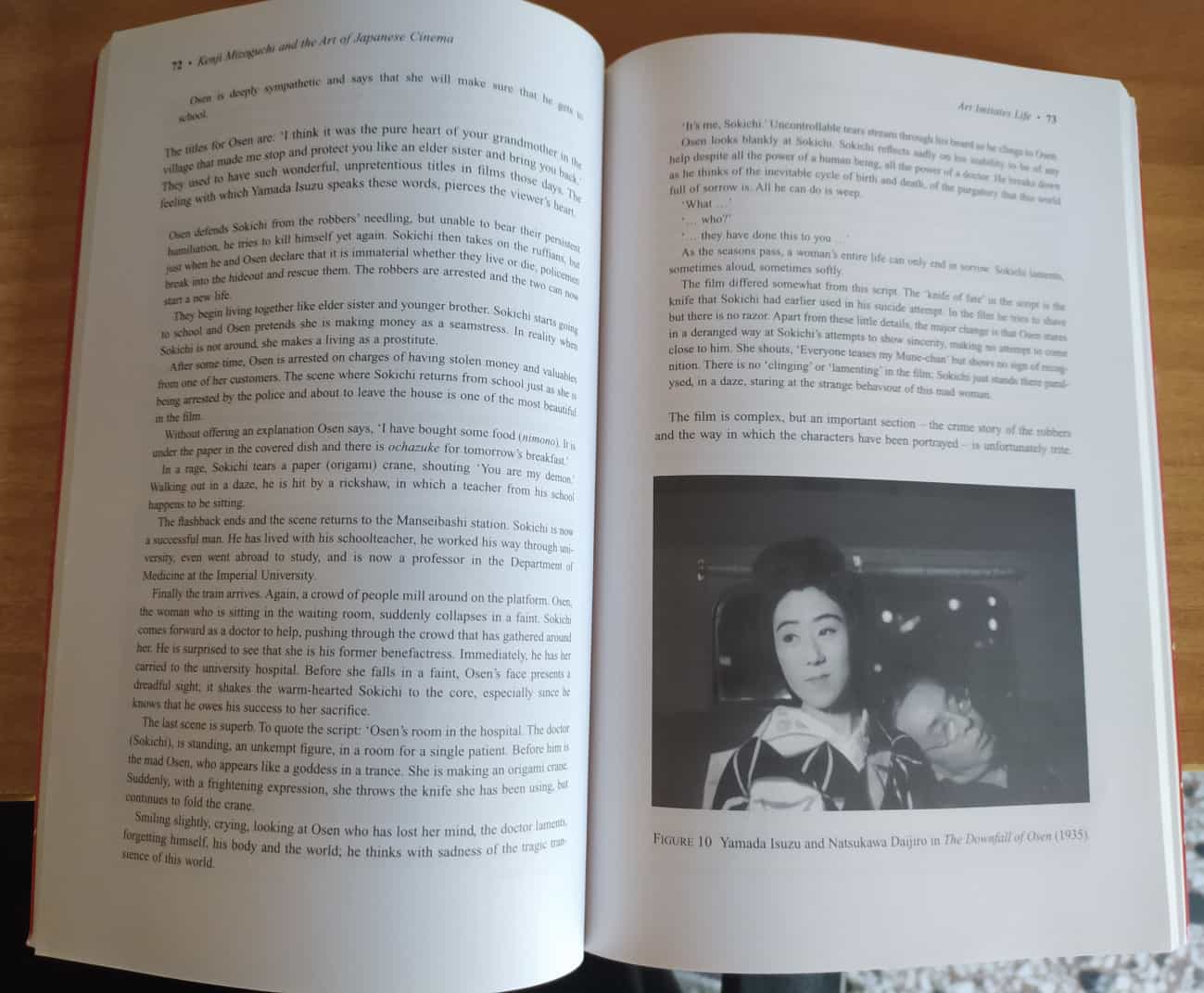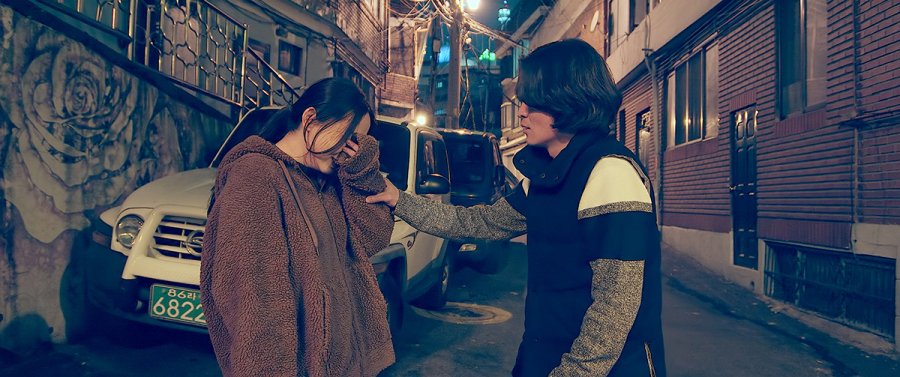When Japan started tests of atom and hydrogen bombs in the 1950s, this event divided the nation, and while many may have felt it was time to show some military strength, the majority of the Japanese population was skeptical or downright against it. Especially after the radioactive rain caused by the tests, the population was, once again after the attacks on Nagasaki and Hiroshima, confronted with the implications of fallout and radioactivity. While he directed a propaganda film for the army in the 1940s, director Akira Kurosawa quickly developed a more critical eye for the political developments in his home country and their nuclear program, which infused many of his works. A direct reaction to the tests was his 1955 feature “I Live I Fear”, a drama whose central family showcased the social divide in the nation and how one is supposed to life when all life can be extinguished so quickly.
Buy This Title
on Amazon
After the bombings of his home country, foundry owner Kiichi Nakajama (Toshiro Mifune) has developed a deep fear of the dangers of radioactivity and wants to protect his family from what he sees as an imminent threat to their lives. While his plan to build an underground bunker and move to the north was thwarted when he heard about the radioactivity being stronger there, he decided to invest his money in his family immigrating to Brazil. Because his first project already cost the family a lot of money, and none of them, most importantly his sons, are in agreement with the patriarch's new idea, they want to keep him from wasting any more of their money with the help of the court.
As the case proves to be quite difficult for the judges, two mediators are called upon, one of them Doctor Harada (Takashi Shimura) to settle the argument. However, both sides are unwilling to give in, with Kiichi expressing his disappointment and anger for his son's, their disobedience and their unwillingness to realize his plan will save them. Despite Harada finding himself agreeing with some of the things Kiichi says, the judge decides against the foundry owner, manifesting the deep chasm within the family, as the old man is more than ever ready to go through with his plan.
While “I Live in Fear” earned quite a lot of critical praise and also competed for the Palme d'Or at Cannes Film Festival 1956, it wasn't a commercial success, resulting in Kurosawa focusing more on genre features for the next couple of years. However, it is works like “Stray Dog”, “The Bad Sleep Well” or “I Live in Fear” which showcase a different side to the director, while also including the themes that define his filmography. In the case of his 1955 movie, the moral conflict could not be more imminent, and is even portrayed through Takashi Shimura's character, trying to make a case for Kiichi who is seen as irrational and even branded insane by his own family, even though his fear is quite real. It is a fear you cannot dismiss easily, as Kiichi emphasizes his actions are founded in his sense of responsibility for his loved ones.
In the context of post-war Japan, Kurosawa's feature highlights how fear has become a constant in people's daily life, albeit with different consequences. Toshiro Mifune plays a flawed man, unable to function properly in this world where everyone seemingly has chosen to live with fear, and give in to the notion you are helpless in any case, so you might as well carry on. Among his collaborations with Kurosawa it might not be his most popular performance, but it still has the same intensity and humanity, emphasizing Kiichi's development from being a responsible head of a family to an absurd hero in the end. And while the sound of jets as well as sirens is part of other people's lives, Kiichi cannot live with the fear anymore, which is why he becomes ostracized from society.
Apart from the performances, “I Live in Fear” is also notable for his music, the last collaboration of Kurosawa and composer Fumio Hayasaka, who died of tuberculosis in 1955. Along with Asakazu Nakai's cinematography, it emphasizes such notion of absurdity and the realization of one's helplessness in the face of a threat, you cannot run away from.
In conclusion, “I Live in Fear” is a powerful drama about the threat of war, and the absurdity of trying to run away from it. It is not Akira Kurosawa's most famous work, but its performance, its cinematography and its music make “I Live in Fear” quite a worthwhile viewing experience, especially for its statement against nuclear war.


